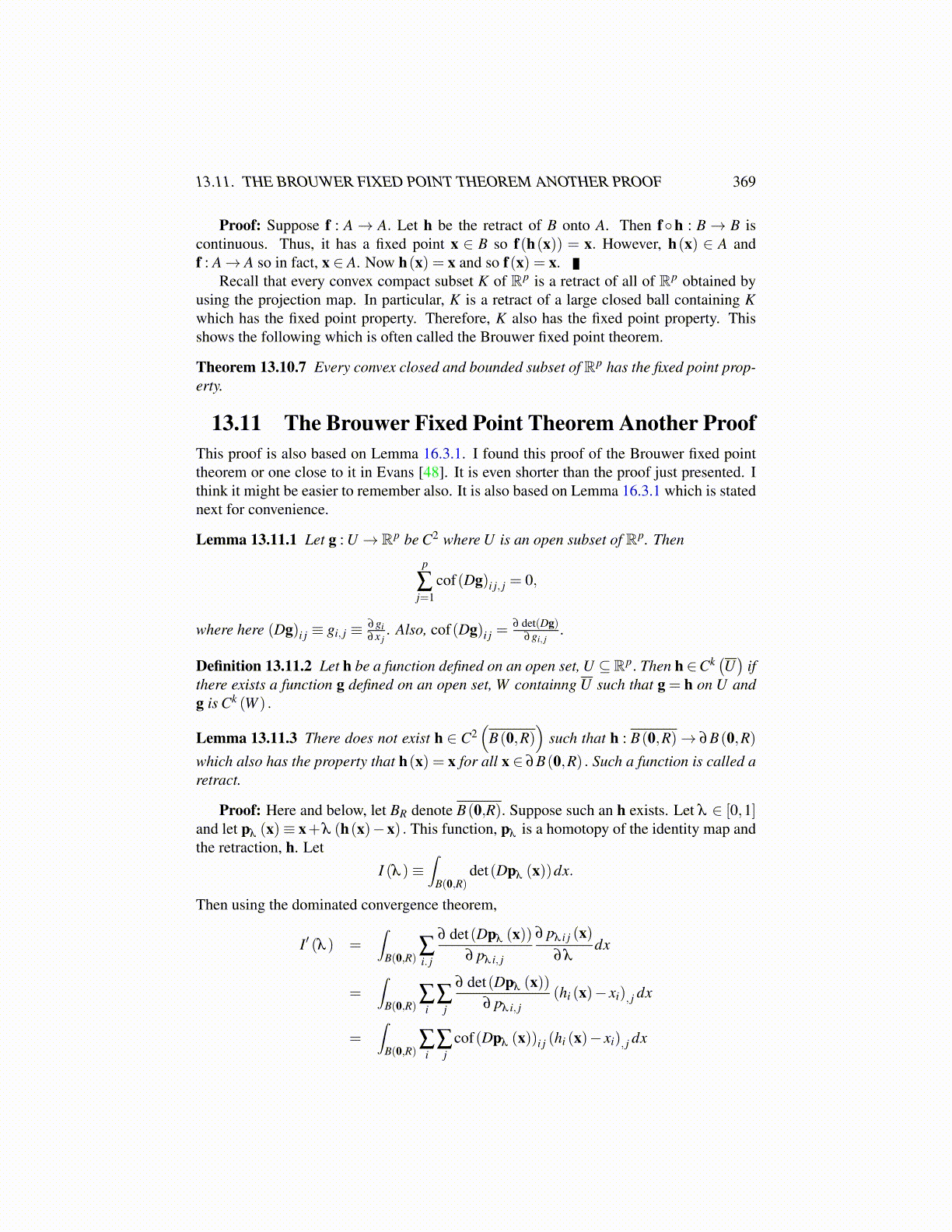
13.11. THE BROUWER FIXED POINT THEOREM ANOTHER PROOF 369
Proof: Suppose f : A→ A. Let h be the retract of B onto A. Then f◦h : B→ B iscontinuous. Thus, it has a fixed point x ∈ B so f(h(x)) = x. However, h(x) ∈ A andf : A→ A so in fact, x ∈ A. Now h(x) = x and so f(x) = x.
Recall that every convex compact subset K of Rp is a retract of all of Rp obtained byusing the projection map. In particular, K is a retract of a large closed ball containing Kwhich has the fixed point property. Therefore, K also has the fixed point property. Thisshows the following which is often called the Brouwer fixed point theorem.
Theorem 13.10.7 Every convex closed and bounded subset of Rp has the fixed point prop-erty.
13.11 The Brouwer Fixed Point Theorem Another ProofThis proof is also based on Lemma 16.3.1. I found this proof of the Brouwer fixed pointtheorem or one close to it in Evans [48]. It is even shorter than the proof just presented. Ithink it might be easier to remember also. It is also based on Lemma 16.3.1 which is statednext for convenience.
Lemma 13.11.1 Let g : U → Rp be C2 where U is an open subset of Rp. Thenp
∑j=1
cof(Dg)i j, j = 0,
where here (Dg)i j ≡ gi, j ≡ ∂gi∂x j
. Also, cof(Dg)i j =∂ det(Dg)
∂gi, j.
Definition 13.11.2 Let h be a function defined on an open set, U ⊆Rp. Then h ∈Ck(U)
ifthere exists a function g defined on an open set, W containng U such that g = h on U andg is Ck (W ) .
Lemma 13.11.3 There does not exist h ∈ C2(
B(0,R))
such that h : B(0,R)→ ∂B(0,R)which also has the property that h(x) = x for all x ∈ ∂B(0,R) . Such a function is called aretract.
Proof: Here and below, let BR denote B(0,R). Suppose such an h exists. Let λ ∈ [0,1]and let pλ (x)≡ x+λ (h(x)−x) . This function, pλ is a homotopy of the identity map andthe retraction, h. Let
I (λ )≡∫
B(0,R)det(Dpλ (x))dx.
Then using the dominated convergence theorem,
I′ (λ ) =∫
B(0,R)∑i. j
∂ det(Dpλ (x))∂ pλ i, j
∂ pλ i j (x)∂λ
dx
=∫
B(0,R)∑
i∑
j
∂ det(Dpλ (x))∂ pλ i, j
(hi (x)− xi), j dx
=∫
B(0,R)∑
i∑
jcof(Dpλ (x))i j (hi (x)− xi), j dx